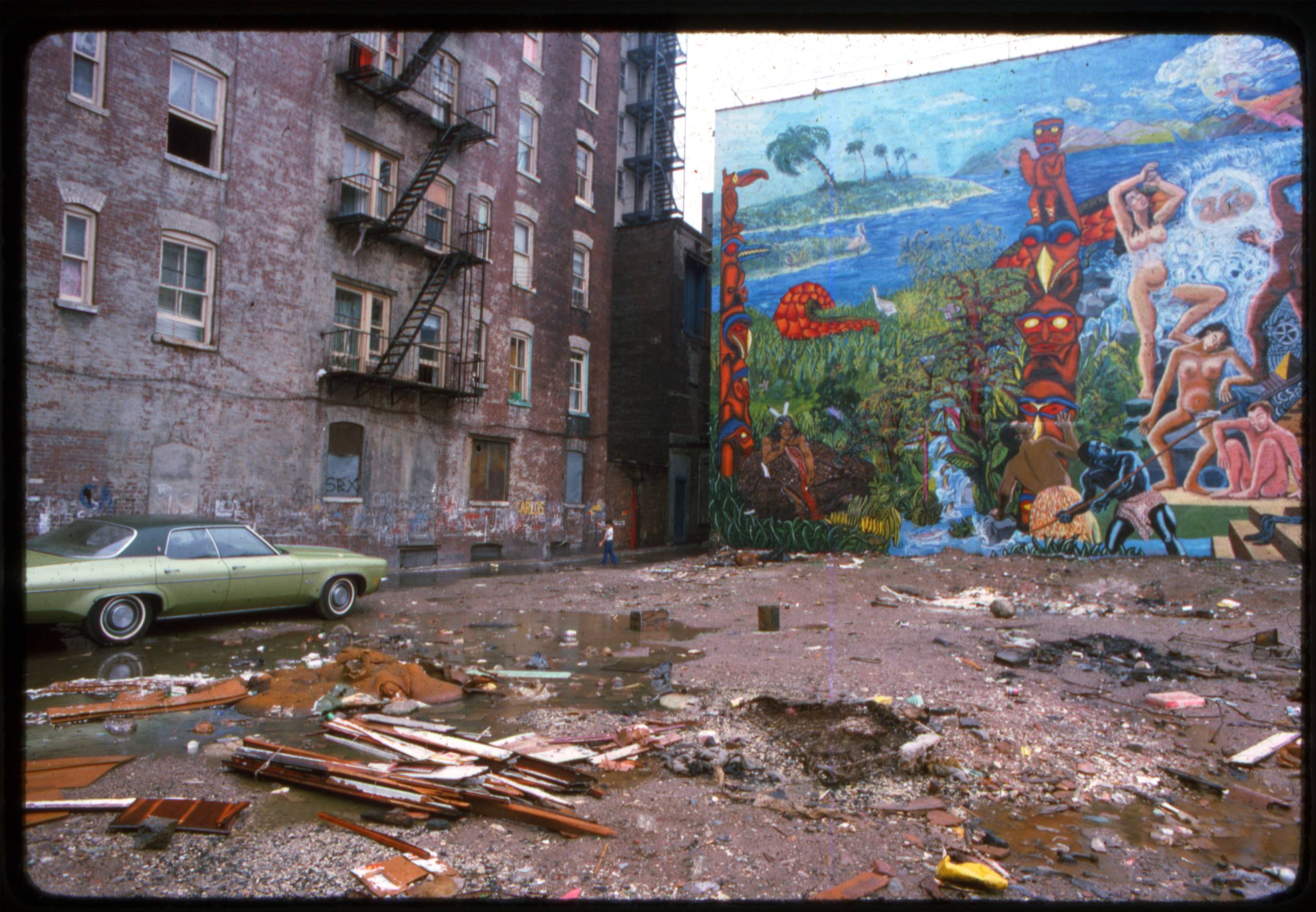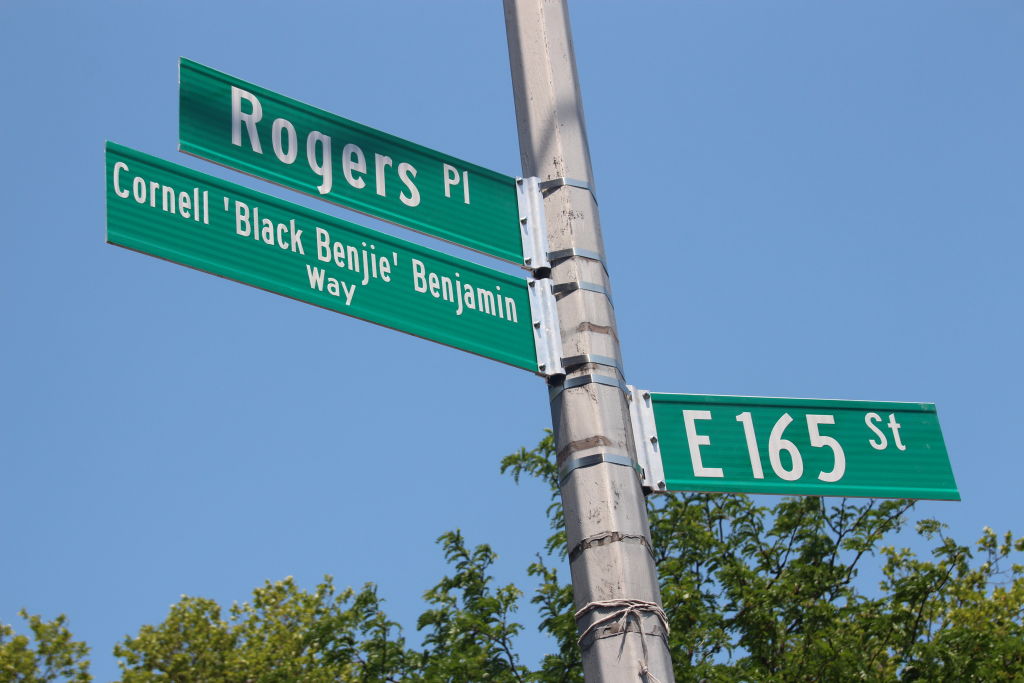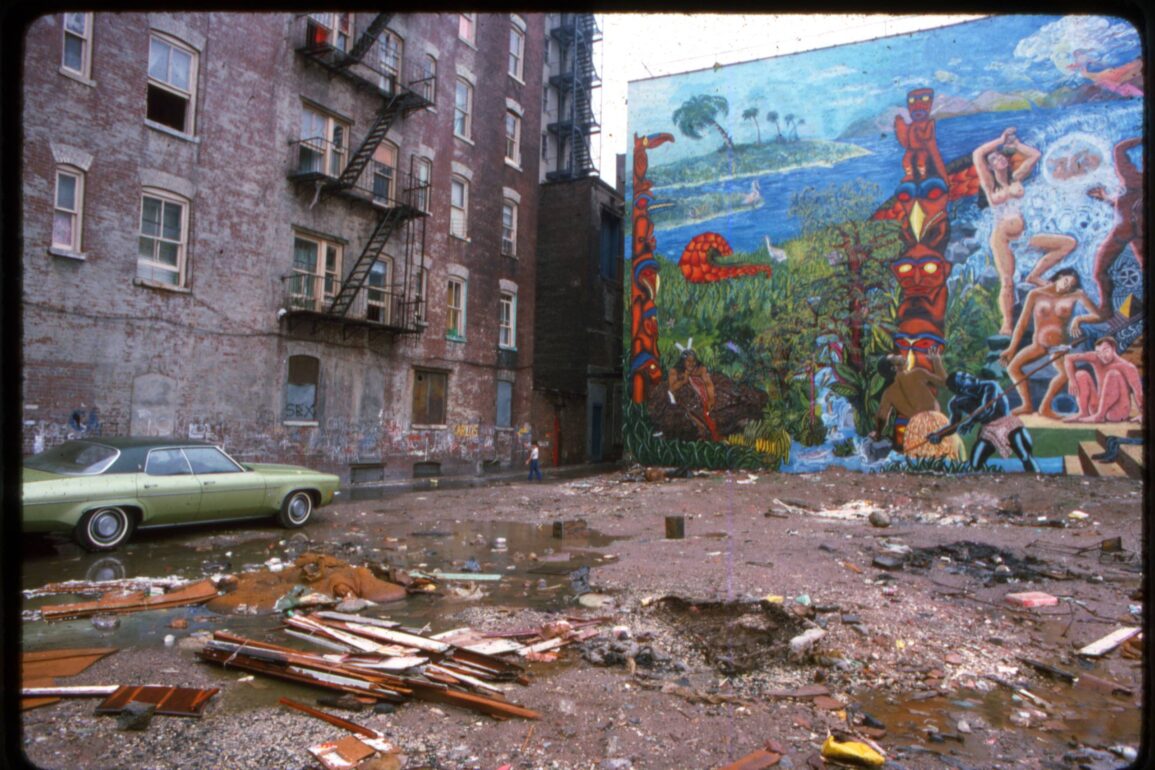Cornell “Black Benjie” Benjamin’s life has long been an urban legend. It parallels the fictional tale of Cyrus, the enigmatic figure whose death is the catalyst for the events of the 1965 novel and 1979 Hollywood adaptation of The Warriors. In the fictional accounts, Cyrus summons together New York’s 40,000 gang members for a summit, at which he urges them to stop fighting and killing each other — and take on The Man instead. After uttering the iconic, oft-sampled sound bite, “caaaaan you dig itttttt,” however, Cyrus is shot and killed by Luther, leader of the Rogues, who then blames the killing on the Warriors.
In real life, Black Benjie was a gang leader and former addict who became a drug counselor and community activist. The Ghetto Brothers flew colors and maintained their territory, just like all the other Bronx gangs of that time — including the Savage Skulls, the Black Spades, the Seven Immortals and the Young Lords. But after being mentored by an art teacher, Rita Fecher, and community organizer Evelina Antonetty, the “Puerto Rican Rosa Parks” and founder of United Bronx Parents, the Ghetto Brothers became involved with the Youth Services Agency, a social services organization funded by then-mayor John Lindsay.
The Ghetto Brothers gained media visibility after renouncing violence and seeking to better their community. Their efforts centered around the concept of “community control,” a self-determinant creed not unlike that of Oakland’s Black Panthers.
A further complication was the Ford Foundation’s funding of community service organizations in the Bronx as part of an initiative to quell racial violence between minority populations. Ford’s agenda seemingly aligned with the YSA/Ghetto Brothers alliance, yet ran counter to New York’s entrenched political establishment, whose underdevelopment and outright neglect of the South Bronx created the hellish conditions that allowed the street gangs to proliferate.

I
n 1971, Black Benjie was murdered while attempting to de-escalate a confrontation between the Ghetto Brothers and a rival gang. Following his death, a local television station produced a short film examining the Ghetto Brothers’ attempts at community rejuvenation and the social and environmental conditions they sought to transcend; throughout the film, Sly Stone’s “Just Like A Baby” serves as an elegiac soundtrack to the visual narrative.
Black Benjie’s death catalyzed the Ghetto Brothers to press forward with the proposed gang truce he had been brokering, as well as to further evolve down an alternate path, undertaking cultural activities that became crucial to hip-hop’s original foundation. Other former gang leaders, such as Afrika Bambaaataa, followed in the Ghetto Brothers’ wake. In 1975, Bambaataa formed a cultural organization (the Universal Zulu Nation), renouncing violence in favor of what would become known as hip-hop and a credo of “peace, love, unity and having fun.”
Bits and fragments of this story have been told before, most notably through the documentaries Flyin’ Cut Sleeves and Rubble Kings, which focused on pre-hip-hop street gang culture. Steven Hager’s reporting for The Village Voice and his 1984 book Hip Hop reference the fact hip-hop evolved from street gangs; Jeff Chang’s book Can’t Stop Won’t Stop traced the social and political conditions that created the reality of the South Bronx in the late ’60s and early ’70s — including such urban renewal initiatives as the Cross Bronx Expressway, which isolated the neighborhood from the rest of New York (much like how the 980 freeway bifurcated West Oakland from downtown).
Can You Dig It? represents the deepest dive to date into the Ghetto Brothers and Black Benjie story. The docu-series demythologizes the story, Chuck maintains — allowing the listener to parse fact from folklore.
Its value, he says, lies in the pertinent details and the questions they raise: “It’s the story of a disenfranchised borough, a city that left it for dead. This had all the other things that went along with it. Was it serviced properly? Why were the buildings burning two or three years later? What happened to the Bronx when people came back from Vietnam?… I mean, you get into a historical backdrop. That makes the creation of hip-hop make all that much more sense.”
The setting of Can You Dig It? appealed to Chuck because of his own lived experience. “I’m different from a lot of those rap cats out there. I come from that time,” he says.
Growing up in Long Island, he was initially disconnected from what was happening in the South Bronx. But as he witnessed hip-hop’s evolution unfold “in real time,” he gained an understanding of why it was important. He remembers terminology changing from “Negro” to “colored” to “Black,” experiencing the rawness of James Brown and the revolutionary “mixing pot” of Sly Stone, as well as being “fed by the Black Panthers’ breakfast programs,” and “being privy to” Oakland and Chicago Panther chapters “getting wiped out” by the time he was 13 years old.
As a Black American, he says, “It’s almost like we live our life de-mythizing things. You know what I’m saying? I don’t believe the hype on a lot of things.”

In digging deeper into the environmental landscape and cultural fabric of the South Bronx and focusing on the community reform efforts of the Ghetto Brothers, the docu-series goes beyond one such common myth, that of the so-called Holy Trinity of Bambaata, Kool Herc, and Grandmaster Flash — first presented by Hager, The Village Voice reporter. By leaning into the Ghetto Brothers’ ambitious efforts to move away from violence toward a cultural, community-centric path, Can You Dig It? does as good a job of explaining hip-hop’s raison d’être as any contemporary source.
“Matter of fact,” Chuck elaborates, “it plugs into why hip-hop 51 is important. So the past, present and future all lined up great.”
Told with an array of immersive storytelling techniques, Can You Dig It? places archival sound bites, interviews and dialogued scenes based on real-life accounts alongside Chuck’s narrative voiceovers. The effect is a mix of historical exhibit, social documentary and theatrical drama that not only recreates the world in which Black Benjie and the Ghetto Brothers lived, but presents key context and encourages critical thinking beyond mere entertainment.









